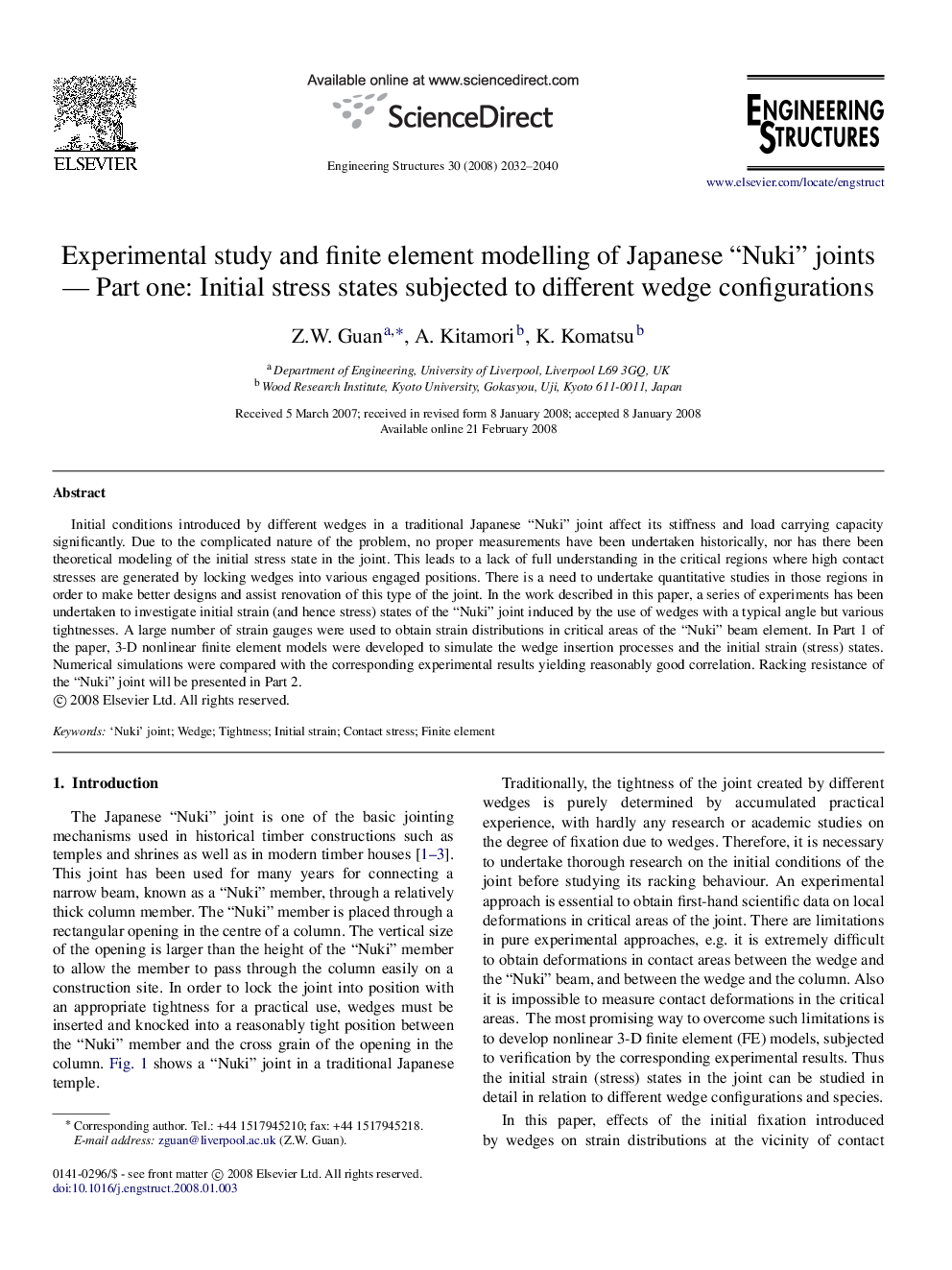| کد مقاله | کد نشریه | سال انتشار | مقاله انگلیسی | نسخه تمام متن |
|---|---|---|---|---|
| 269261 | 504464 | 2008 | 9 صفحه PDF | دانلود رایگان |

Initial conditions introduced by different wedges in a traditional Japanese “Nuki” joint affect its stiffness and load carrying capacity significantly. Due to the complicated nature of the problem, no proper measurements have been undertaken historically, nor has there been theoretical modeling of the initial stress state in the joint. This leads to a lack of full understanding in the critical regions where high contact stresses are generated by locking wedges into various engaged positions. There is a need to undertake quantitative studies in those regions in order to make better designs and assist renovation of this type of the joint. In the work described in this paper, a series of experiments has been undertaken to investigate initial strain (and hence stress) states of the “Nuki” joint induced by the use of wedges with a typical angle but various tightnesses. A large number of strain gauges were used to obtain strain distributions in critical areas of the “Nuki” beam element. In Part 1 of the paper, 3-D nonlinear finite element models were developed to simulate the wedge insertion processes and the initial strain (stress) states. Numerical simulations were compared with the corresponding experimental results yielding reasonably good correlation. Racking resistance of the “Nuki” joint will be presented in Part 2.
Journal: Engineering Structures - Volume 30, Issue 7, July 2008, Pages 2032–2040